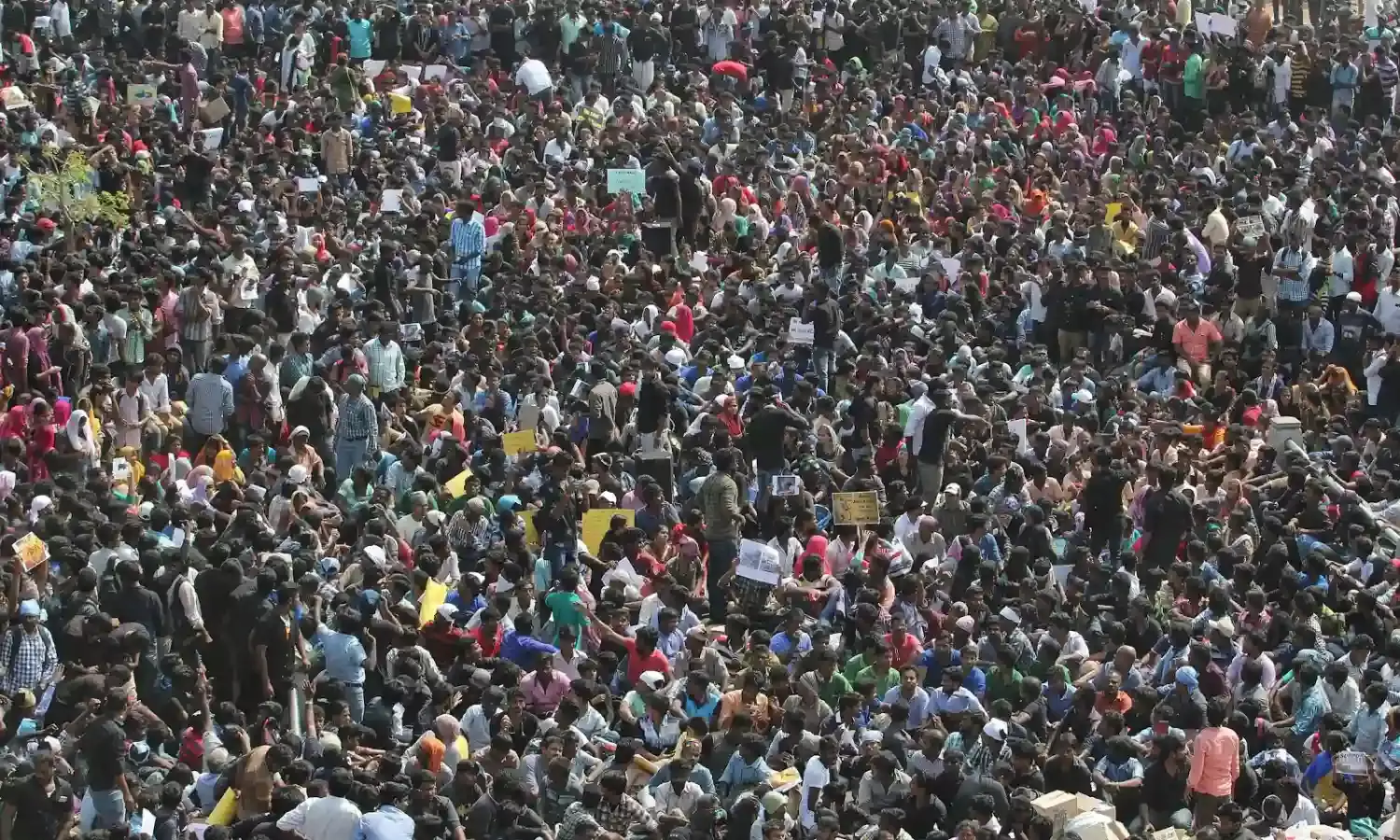Of Protests and Movements in Free India
Civil protests are interwoven into the rich tapestry of independent India’s existence
The judgment of the Supreme Court of India last month to a petition filed in January this year asking for the Shaheen Bagh protests to be cleared, on the grounds that the protests inconvenienced several commuters by shutting off an arterial road, assumes crucial significance.
This is because the judgment, delivered even though the petition itself had been rendered infructuous over the past seven months because of the protestors having voluntarily cleared the protest site due to the Covid pandemic (in paragraph 12 of the judgment, the bench itself states that “really speaking, the reliefs in the present proceedings have worked themselves out”), deals a further body blow to the right to civil protests in India.
It does so by holding that the occupation of public ways indefinitely anywhere “for protests is not acceptable and the administration ought to take action to keep the areas clear of encroachments or obstructions”. It further rules that “demonstrations expressing dissent have to be in designated places alone”. To drive home the point, it expressly posits that “future... protests are subject to the legal position… enunciated above”.
This is the conclusion of a three-part series to analyze and criticize the judgment, and shall employ a historical lens to look back at how civil protests of the very kind proscribed by the judgment are interwoven into the rich tapestry of independent India’s existence. The first part used a legal lens to compare and contrast the judgment with the Supreme Court’s jurisprudence on the same matter, and the second part used a principled as well as prudential perspective to break down the objective and rationale of civil protests.
In the judgment, the Court acknowledges that India’s freedom struggle as well as transition to a democratic tradition is rooted in a culture of civil protest. However, it issues the following caveats: that “the erstwhile mode and manner of dissent against colonial rule cannot be equated with dissent in a self-ruled democracy”.
This distinction is not only specious, but also deeply troubling. It seems to presuppose that people cannot suffer injustices from or have grievances against the government of the same nature in a democracy as they did under colonial rule. This is materially untrue. Historically, much of the peoples that have faced oppression, lack of access to basic human rights and resources, and marginalization in present-day India did so under colonial rule too: adivasis, Dalits, small farmers, and other working class people, especially women among them. The privileged and the well-to-do, on the other hand, have never faced any material difficulties, either then or now.
At another level, this statement is ignorant of the rich history of civil protest in independent India, of exactly the sort that the Court is proscribing in the judgment.
Let us recall some of such civil protest movements:
Mahagujarat Movement
We go first all the way back to 1956, when the States Reorganization Commission (SRC) had recommended that the Bombay state should continue as a bilingual state comprising of both Marathi and Gujarati speakers (the then-Bombay state comprised of present-day Maharashtra and Gujarat). This was unacceptable to both linguistic communities, as they wanted their own separate linguistic states. This outrage did not, however, deter the then-Bombay State Chief Minister Morarji Desai, who was against the state being divided.
In August 1956, over 500 students from schools and colleges in Ahmedabad decided to gherao the local Indian National Congress office and raise protest slogans. As the number of protestors grew and became restless, the police opened fire on them, leading to the death of seven student protestors. This triggered massive protests across the state, as sustained and organized citizen protests kept going in each taluka of each district. Most of the leadership of this protest movement were arrested and kept in the Sabarmati Jail for three and a half months in 1958, but this did not deter the movement. Eventually, the Union Government was forced to engage in negotiations with leaders of the movement, and in May 1960, after nearly four years of sustained agitations, the two new states of Maharashtra and Gujarat were created.
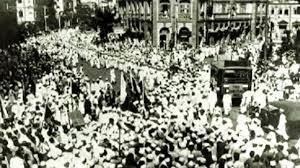
Adivasi struggle against Coca Cola
Next, we go to the Pakkad district of Kerala for the Plachimada Coca-Cola struggle of 2002. In 2000, Coca-Cola set up a soft drinks-manufacturing factory in the Plachimada village here. The factory used about 20 lakh litres of groundwater every day for its production operations, which led to increased water pollution and shortage of water supply for agriculture in the adjoining villages. Additionally, the factory would provide its waste sludge material as free fertilizer to local villagers, which was found to be carcinogenic by a BBC investigation.
To save their lives and livelihoods, over a thousand local citizens, as the Coca-Cola Virudha Janakeeya Samara Samithy, or the Anti-Coca-Cola Peoples Struggle Committee, began protesting by blocking the gates of the factory in April 2002. In the initial few months of the protests, the protestors faced hostility from the local political parties, police as well the media. The protests were dismissed as politically-motivated and anti-development. Several protestors were also arrested and charged with false cases. However, as the movement persisted, it acquired support from civil society organizations and citizens across the state and the rest of the country, and even from international environmental groups.
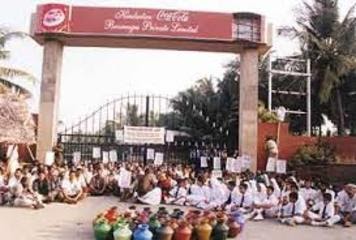
Eventually, the local panchayat withdrew its license for the factory in 2003, and after a protracted legal battle in the High Court of Kerala, the factory finally ceased operations in 2004.
Anti-corruption movement
Fast forward to Delhi in 2011, which was the setting for the watershed India anti-corruption movement that took over not just Delhi, but the whole country and made its presence felt even as far as Britain, France, Germany, and the USA. The movement kick-started with anti-corruption activist Anna Hazare beginning a hunger-strike at Jantar Mantar in Delhi in April 2011 to demand a robust anti-corruption legislation, where he was joined by thousands of other common citizens. The non-violent protests, which were probably the first mass protests that enjoyed near-universal support within India’s burgeoning professional middle-class that has usually been perceived as apolitical, signaled that the citizenry had had it with entrenched public corruption, and would no longer tolerate it. Tens of thousands of protestors, led by Anna Hazare, occupied the Jantar Mantar and the Ramlila Maidan in Delhi, national and international headlines, as well as public imagination, for most of 2011 and 2012.
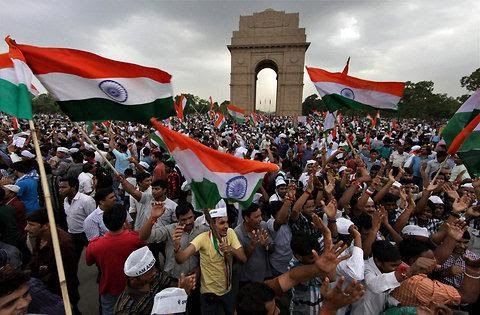
There are plenty of parallels between the Anti-corruption movement and the recent Shaheen Bagh protests. For one, they were organic movements led by common citizens from outside party politics, which is perhaps why they attracted passionate participation from thousands of citizens.
Secondly, mirror protests came up in support in other parts of India, as well as among the Indian diaspora abroad.
Third, both were derided by members of the Union Government variously as threats to law and order, attempts to mislead public, proxies of the main opposition parties (ironically, the INC was in power in 2011 and accused the BJP of organizing the protests; earlier this year, the roles were reversed!), and even a product of foreign conspiracy.
Fourth, in both cases, the opposition parties vocally supported the protests, and tried to hijack them (to both movements’ credit, though, they resisted these efforts and kept their makeup decidedly non-political party-driven).
Fifth, many of the protestors were arrested by the Delhi police (during the protests in 2011; after the protests during the Covid lockdown this year).
The only significant difference, though: that the UPA Government of 2011 actually engaged with the Anti-corruption movement, and even introduced the Jan Lokpal Bill in the form desired by the movement into the Parliament (it was eventually not passed, though). On the other hand, the NDA Government refused to engage with the Shaheen Bagh anti-CAA protestors at all, leaving it to the Supreme Court to appoint interlocutors to meet the protestors.
This is noted with some distress by the court in its observation in the judgment that “[i]n what manner the administration should act is their responsibility and they should not hide behind the court orders or seek support therefrom for carrying out their administrative functions. The courts... are not meant to give shoulder to the administration to fire their guns from. Unfortunately, despite a lapse of a considerable period of time, there was neither any negotiations nor any action by the administration, thus warranting our intervention.”
Sakala Janula Samme
Another stellar non-violent civil protest movement ensued in 2011 in the Telangana region of the then-undivided state of Andhra Pradesh. From September 13 onwards, the region witnessed the Sakala Janula Samme, or an All People’s Strike, to demand a separate state of Telangana.
During this period, lawyers boycotted courts, most government employees, including government school teachers, state road transport corporation employees, and state electricity board employees throughout Telangana refused to work, and over 60,000 coal mine workers too joined the strike.
There was a road blockade on national highways, a rail blockade that led to most trains being cancelled or diverted, and even an auto rickshaw strike. In spite of essential services being affected and several thousand protestors being routinely arrested by the police, the movement enjoyed mass popularity and sustained for six weeks before being called off in October.
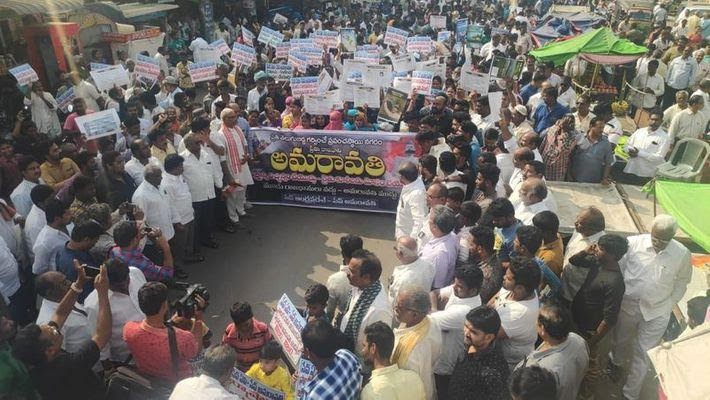
The efforts of the protestors bore fruit when Telangana was carved out and given statehood in 2014.
Hok Kolorob Jadavpur University protests
Another protest movement that shared several similarities with the Shaheen Bagh protests was the Hok Kolorob Movement, better known as the Jadavpur University (JU) student protest of 2014, in Kolkata. The protests, triggered by a demand for investigation into an incident of alleged molestation of a female student on the Jadavpur University campus, and intensified after some peaceful student protestors were subjected to brutal police violence on the university campus, triggered spontaneous mass waves of protests across the city that involved not only students and teachers, but also Kolkatans from all walks of life.
There were demonstrations in several cities across India, primarily by university students, expressing solidarity with the movement. The high-point of the movement came on September 20, when a rally of about a lakh people marched, drenched in rain, to the Governor’s House to demand action.
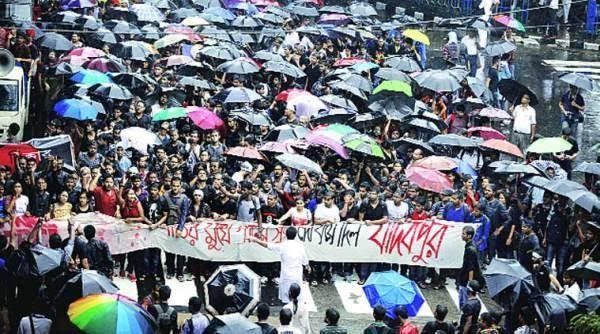
JU students and teachers continued protesting for the next four months, employing various methods such as boycotting classes, boycotting the convocation ceremony, demonstrating inside the campus, and some students even embarking on fasts unto death. The movement culminated with the West Bengal Chief Minister Ms. Mamata Bannerjee meeting the students in January 2015, and the JU Vice-Chancellor resigning.
This student-led movement had a strong cultural flavor: protestors engaged in creative forms of protest, such as singing and dance performances, poetry, slogans drawn from Bengali literature, as well as colorful posters and graffiti lining the streets of Kolkata and the JU campus. This was also one of the first Indian protest movements that successfully employed social media and the internet for organization and dissemination.
Pro-jallikattu movement
A shining example of peaceful civil protests done right is the pro-jalikattu movement in Tamil Nadu in January 2017. The movement was triggered by the Supreme Court of India’s 2014 order that banned the practice of jalikattu. Jalikattu is a traditional bull-taming held during Pongal in Tamil Nadu. While the apex court banned the practice on grounds of animal cruelty, the practice had been carried out by locals, with tacit support of the state government, in 2015 and 2016 anyway. In the run-up to Pongal in 2017, the Supreme Court had resisted efforts to reconsider its order, and stuck to its stance.
The movement started with hundreds of protestors collecting at the Marina Beach in Chennai to demand revocation of the legal ban on jalikattu. Gradually, the movement spread across other parts of the state, with thousands of protestors gathering in all prominent parts of the state. It culminated in the Tamil Nadu Vidhan Sabha passing a law to legalize the practice.
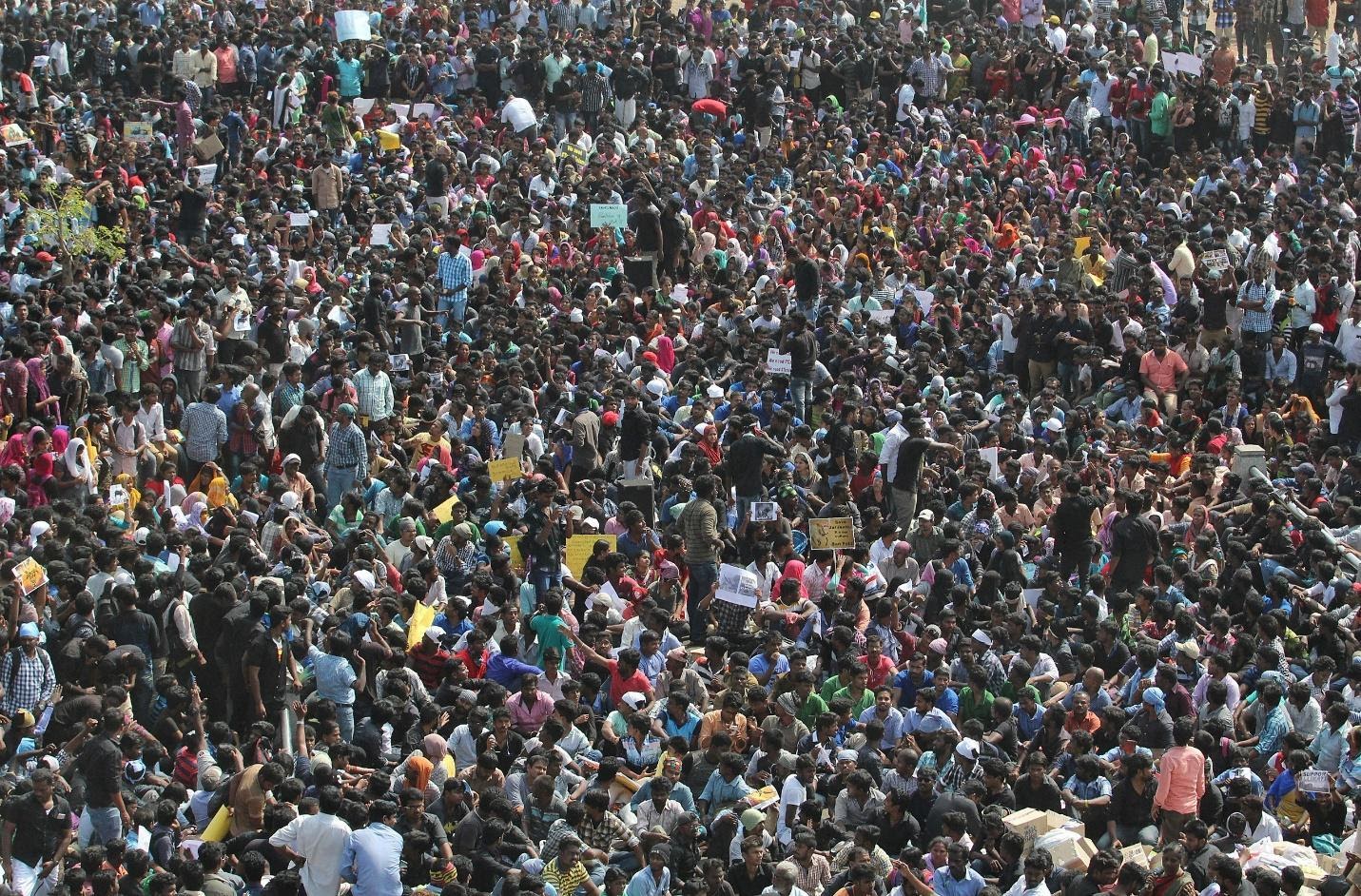
The two-week protest movement was spontaneous, organic and leaderless, and enjoyed mass support because of its articulation of Tamil pride. Tamil youth took out demonstrations in support in other parts of the country, as well as in all other countries with a considerable Tamil diaspora. It was also widely commended for its peaceful and bipartisan nature, and its use of Tamil cultural imagery.
Amaravati Protests
The final example we will examine is a protest movement that ran concurrently with the Shaheeh Bagh protests, in Amaravati, Andhra Pradesh. The Andhra Pradesh State Government’s decision in December 2019 to establish three different state capitals greatly triggered farmers in the Amaravati capital region. This is because most of them had given their agricultural land to the Chandrababu Naidu-led previous state government under its land pooling scheme for the development of the new capital, in the promise of returns they hoped to get from the development of a world class city whose master plan was created by the Singapore government; they feared that alternative capitals would mean that Amaravati’s promise of development would not be fulfilled.
As part of their protests, farmers blocked and demonstrated on roads leading to the Andhra Pradesh Secretariat, and threatened mass suicide if the government’s decision was not withdrawn. Over the next few days of the protests, business establishments and schools were shut down, trade union leaders called for a bandh across Amaravati, and all vehicular traffic, including even Road Transport Corporation buses, was stopped from going towards the Secretariat.
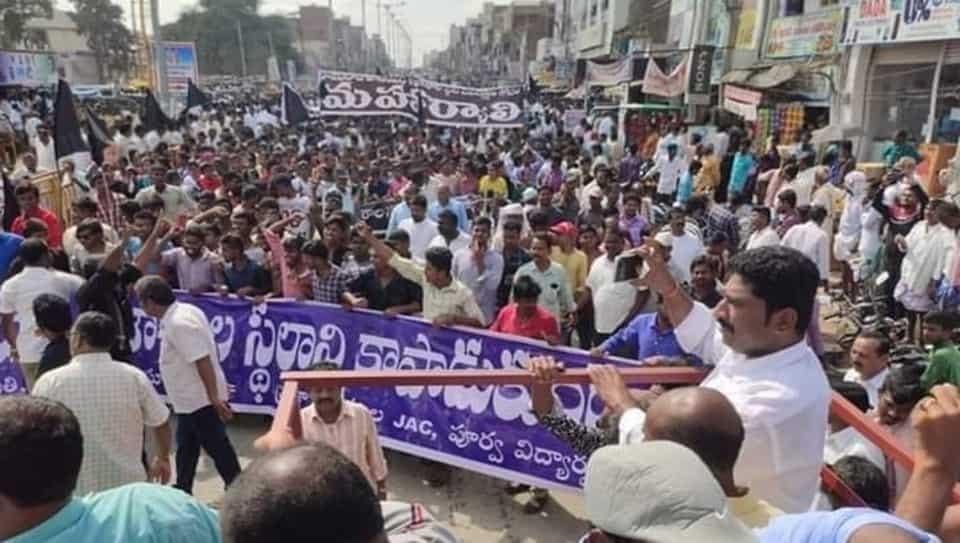
In spite of several protestors being detained, protests continued into 2020, as the state government continued to stick to its guns, till the Covid-enforced national lockdown forced them to disband.
Shaheen Bagh part of peaceful protest legacy
What are the common threads running through all these protest movements? Most crucially, they were all peaceful non-violent civil protests sustained over a prolonged period, in the best tradition of Gandhian satyagraha. In a country where most public demonstrations turn violent and destructive, these protest movements displayed immense restraint and discipline to articulate dissent within the bounds of Constitutional morality, even in the face of hostile state machinery and provocative police force, continuously for weeks and months.
Equally importantly, they are all genuine mass movements, with protestors consisting of common citizens, rather than political actors with vested interests. These protestors took to the streets with common grievances, and a collective burning desire to get their governments to listen to their demands, and stayed on the streets for as long as it took to get their governments to respond to them.
Most pertinently, though, the methods adopted by them, including the occupation and obstruction of roadways, as well as striking and shutting public services, must have undoubtedly caused inconvenience to the public. None of these protest movements necessarily took the time to ask the government for permission about the manner and venue of protests either. Would a government that had failed to pay heed to their demands listened to their request to protest?
As elaborated in the previous part, the protestors knew that in order to get a complacent government to respond, the status quo must be disrupted, which is why all these movements achieved their objectives to varying degrees.
These protest movements form an indelible part of our nation’s civil rights’ history and add sheen to our democratic ethos. The Shaheen Bagh protests are at one with them, and will be similarly celebrated by posterity. Unfortunately, none of them would have been possible under the regulations imposed by the Supreme Court judgment on future protests.
When a sustained peaceful civil protest that continues India’s proud legacy of previous such protests is described as “out of hand” by the Supreme Court of the land, what could be more disconcerting for the fate of right to peaceful protest in India?
This article is the third in a three-part series. Read the second part here and first part here.
Vineet Bhalla is a Delhi-based lawyer.



